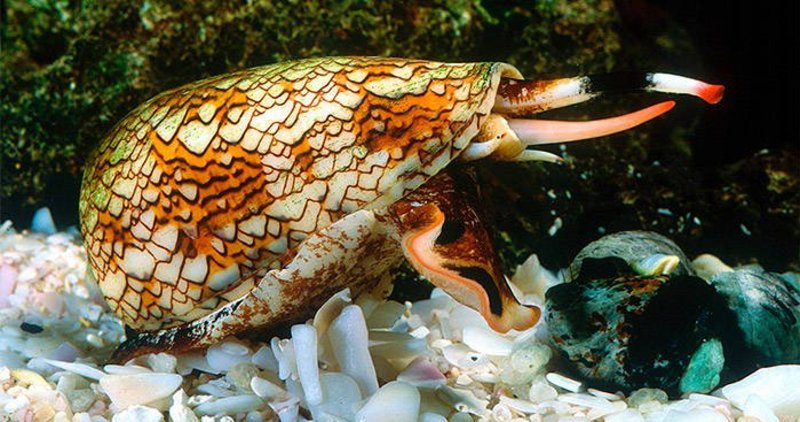Israeli scientists revealed the mechanism of the sea cone snail’s venom, which may lead to new drugs for abnormal heart rate and high blood pressure, the Weizmann Institute of Science (WIS) reported Thursday.
The findings may also lead to the development of safe natural insecticides, because some components of this venom only kill insects, and not mammals.
The findings, published in the scientific journal PNAS, may explain some of the side effects of potassium-blocking drugs, such as heart arrythmia and hypertension drugs, and lead to the development of better ones.
The venom of many venomous animals paralyzes their victims with toxins plugging the opening, or pore, of the channels that lead potassium ions into and out of the cell, a mechanism called “a cork in the bottle.”
These potassium channels are essential cellular structures that regulate the transmission of neuronal signals, electric stimulation of the muscles and numerous other processes by letting potassium ions flow.
The researchers were surprised to find that the cone snail’s venom acts differently, not by a cork-in-the-bottle, but by a previously unknown mechanism that took effect on the periphery of the channel’s pore.
It was found that the snail’s venom disrupted the hydrogen bonds within the channel in a way that increased the flow of water around the channel pore, causing the pore to collapse.
Thus, the whole channel stopped functioning, and the flow of potassium ions was blocked, but not by “a cork in the bottle” mechanism, instead, by a new mechanism operating on the channel’s pore.
The results will allow testing whether side effects caused by potassium channel-blocking drugs are due to structural changes that resemble those induced by the cone snail toxins.
“If small-molecule drugs are designed to alter the periphery of the channel, causing the pore to collapse, it may be possible to target subsets of channels that are selectively expressed in specific cells, reducing side effects,” the researchers conclud



